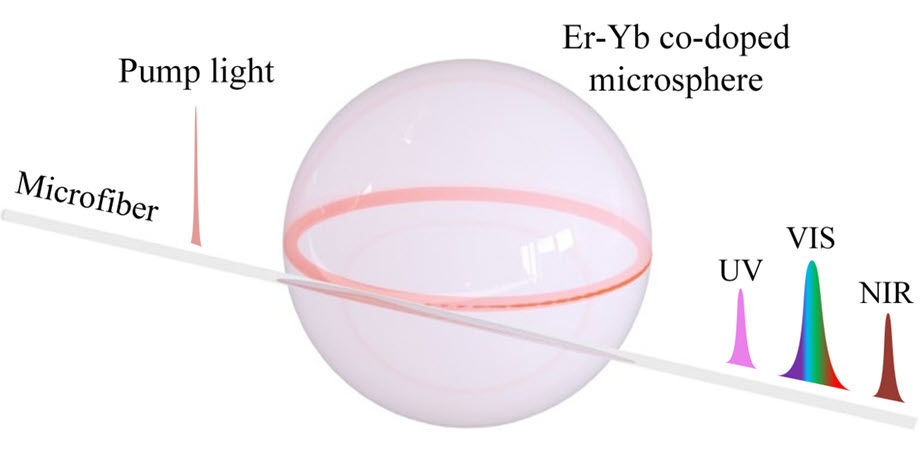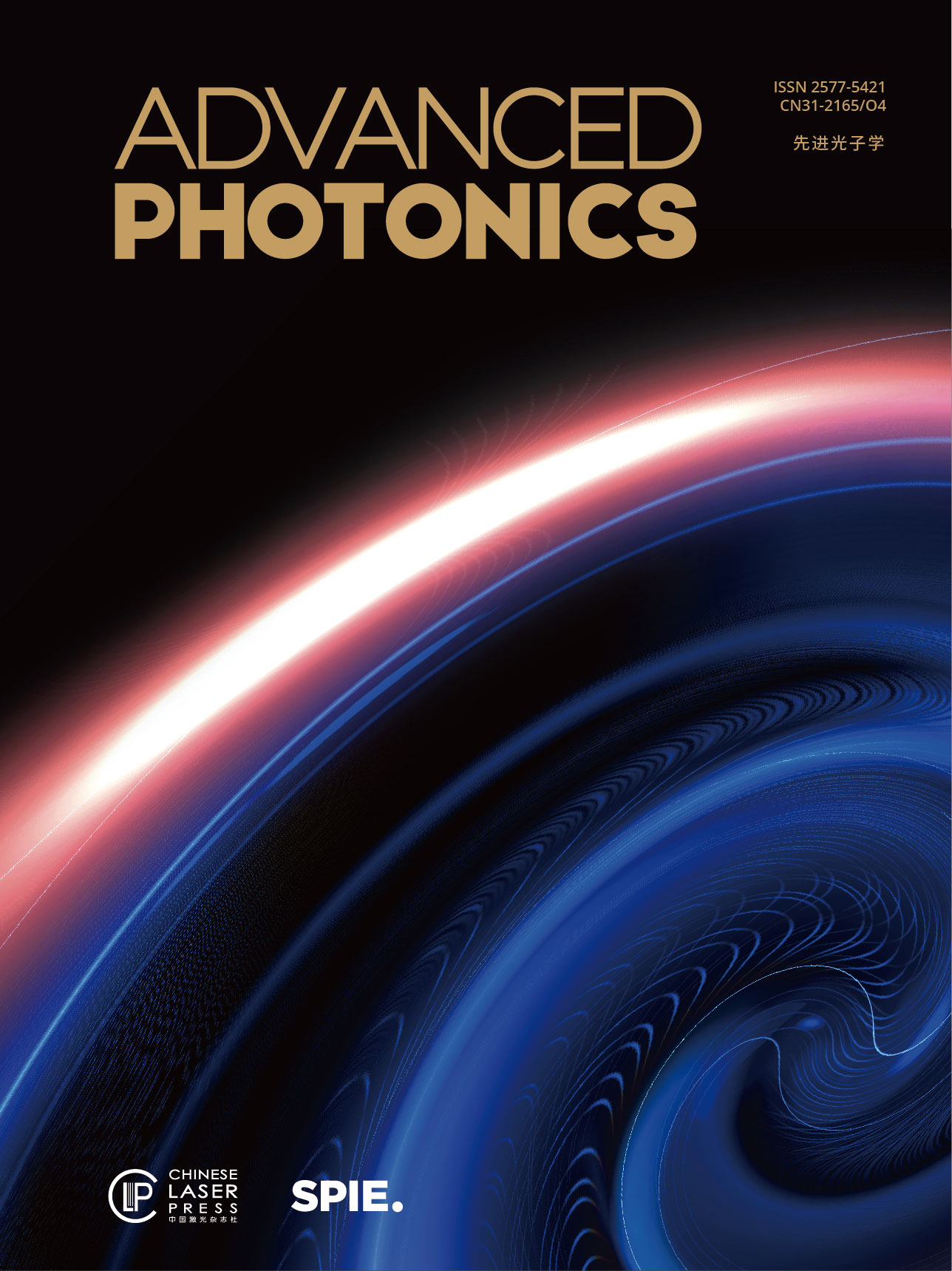
Simultaneous ultraviolet, visible, and near-infrared CW lasing at room temperature. Credit: B. Jiang et al., doi 10.1117/1.AP.4.4.046003
Microlasers with multiple lasing bands are crucial components in various applications, such as full-color display, optical communications, and computing. Rare earth (RE) elements offer abundant long-lived intermediate energy levels and intraconfigurational transitions necessary for emissions over a wide range of lightwave bands.
It’s possible to generate deep-ultraviolet to mid-infrared light by pumping photons through lasing processes known as “downshifting,” to lower the frequency — and "upconversion," to increase the energy. Upconversion offers unique advantages, including better penetration depth and less ionization damage, but it's generally more difficult than downshifting. Combining downshifting with upconversion can expand the emission wavelength range for the greatest potential.
Ultrahigh-Q rare-earth-doped microcavity
Using REs for upconversion eliminates the need for rigorous phase-matching conditions or high pump density, so researchers have asked if could be possible to construct a multiband laser by integrating or “doping” RE elements into an ultrahigh-Q microcavity without degrading its intrinsic Q factor. The answer is yes.
As reported in Advanced Photonics, a team from Huazhong University of Science and Technology (HUST) employed polymer-assisted thermal doping to fabricate RE-doped microcavities with ultrahigh intrinsic Q factors exceeding 108. The doping process reportedly does not introduce any obvious ion clustering or scattering loss. An ultrahigh intrinsic Q factor makes it a natural platform for achieving lasing and further nonlinear phenomena that require low power.
Multiband lasing at room temperature
Research for high-order upconversion lasers typically employs a pulsed laser pump in a cryogenic environment, to reduce thermal damage for gain materials and resonant cavities. This is the first demonstration of ultraviolet and violet continuous-wave upconversion lasing from RE elements at room temperature.
The HUST team doped a microcavity with erbium and ytterbium and pumped it with a continuous-wave 975-nm laser. The resulting laser spans a wavelength range of about 1170 nm, covering ultraviolet, visible, and near-infrared bands. The team estimated that all the lasing thresholds were at the submilliwatt level. The microlasers exhibited good intensity stability over 190 minutes, which makes them suitable for practical applications.
This demonstration spotlights the possibility of stable multiband lasing by RE elements. While this study used erbium and ytterbium, other types of RE elements — such as thulium, holmium, and neodymium — may allow for flexible pump schemes and abundant lasing wavelengths. Aside from the advantages for laser applications, the ultrahigh-Q doped microcavity may also offer an excellent platform for ultrahigh-precision sensing and investigation of cavity–matter–light interactions.
Read the Gold Open Access article by B. Jiang et al., “Simultaneous ultraviolet, visible, and near-infrared continuous-wave lasing in a rare-earth-doped microcavity,” Adv. Photon. 4(4) 046003 (2022), doi 10.1117/1.AP.4.4.046003.


